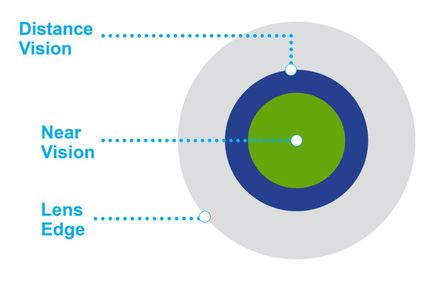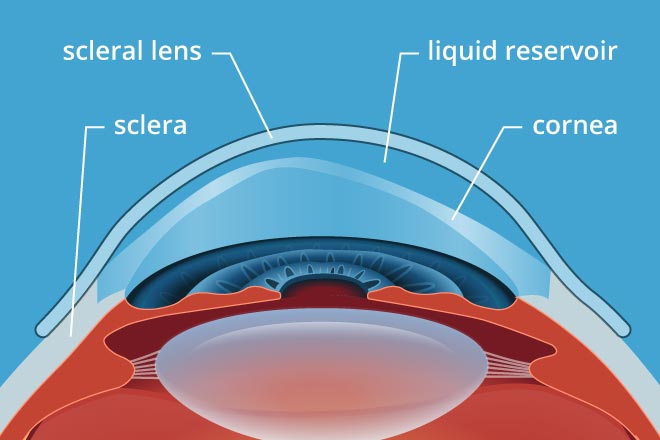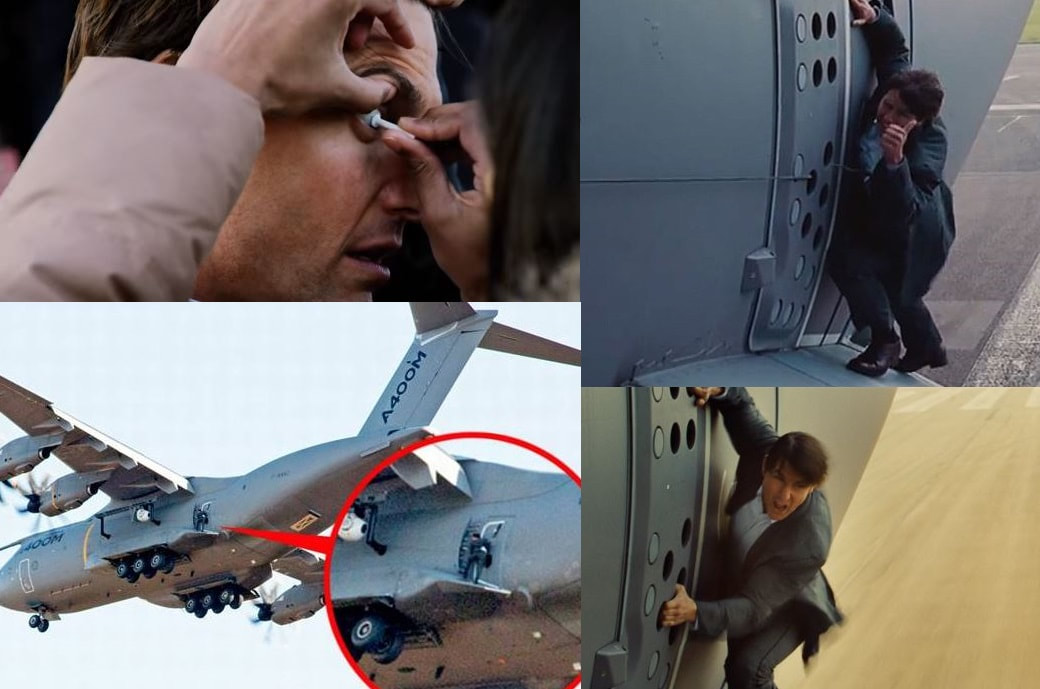Scleral Contact Lenses: Regain Lost Vision
If you've been told in the past that you cannot wear contact lenses because of dry eye, irregular cornea, or other problems, you may want to ask our corneal specialists about scleral contact lenses.
Scleral contacts are large-diameter contact lenses specially designed to vault over the entire corneal surface and rest on the "white" of the eye (sclera). In doing so, scleral lenses functionally replace the dry or defective cornea with a perfectly smooth optical surface.
Additionally, the space between the cornea and the back surface of a scleral lens acts as a fluid reservoir to provide comfort for people with severe dry eyes who otherwise could not tolerate contact lens wear.
Scleral contacts are large-diameter contact lenses specially designed to vault over the entire corneal surface and rest on the "white" of the eye (sclera). In doing so, scleral lenses functionally replace the dry or defective cornea with a perfectly smooth optical surface.
Additionally, the space between the cornea and the back surface of a scleral lens acts as a fluid reservoir to provide comfort for people with severe dry eyes who otherwise could not tolerate contact lens wear.
 Design of a Multifocal Scleral Contact Lens
Design of a Multifocal Scleral Contact Lens
Scleral contact lenses are custom-made for each wearer, so fitting scleral contacts demands greater expertise and more time than fitting standard soft or GP contact lenses. This also allows for a greater degree of accuracy in bifocal or multifocal vision.
Often, computerized maps of the curvature of the entire cornea are generated to facilitate the lens fitting, and several trial lenses of different sizes and curvatures may be applied to the eye during the fitting process.
Also, depending on the complexity of the problem and how the individual eye tolerates the scleral lens, adjustments of lens parameters may be needed, which will require additional lenses to be made and exchanged. The entire scleral lens fitting process can take several visits to determine the optimal lens for each eye.
While many individuals who use scleral lenses have worn soft or corneal GP lenses in the past, the process for applying and removing scleral lenses may take some practice. The additional time needed to master this, due to the larger size of the lenses and the fluid reservoir under the lenses, needs to be taken into consideration during the fitting process.
For these and other reasons, scleral contact lenses can cost significantly more than standard contacts. Most insurance programs do not automatically cover the full cost of scleral contact lenses. In some cases, VSP vision insurance may reduce the cost of your lenses and/or fitting fee if they deem the lenses as medically necessary to correct a condition that cannot be adequately corrected in spectacles.
Often, computerized maps of the curvature of the entire cornea are generated to facilitate the lens fitting, and several trial lenses of different sizes and curvatures may be applied to the eye during the fitting process.
Also, depending on the complexity of the problem and how the individual eye tolerates the scleral lens, adjustments of lens parameters may be needed, which will require additional lenses to be made and exchanged. The entire scleral lens fitting process can take several visits to determine the optimal lens for each eye.
While many individuals who use scleral lenses have worn soft or corneal GP lenses in the past, the process for applying and removing scleral lenses may take some practice. The additional time needed to master this, due to the larger size of the lenses and the fluid reservoir under the lenses, needs to be taken into consideration during the fitting process.
For these and other reasons, scleral contact lenses can cost significantly more than standard contacts. Most insurance programs do not automatically cover the full cost of scleral contact lenses. In some cases, VSP vision insurance may reduce the cost of your lenses and/or fitting fee if they deem the lenses as medically necessary to correct a condition that cannot be adequately corrected in spectacles.

